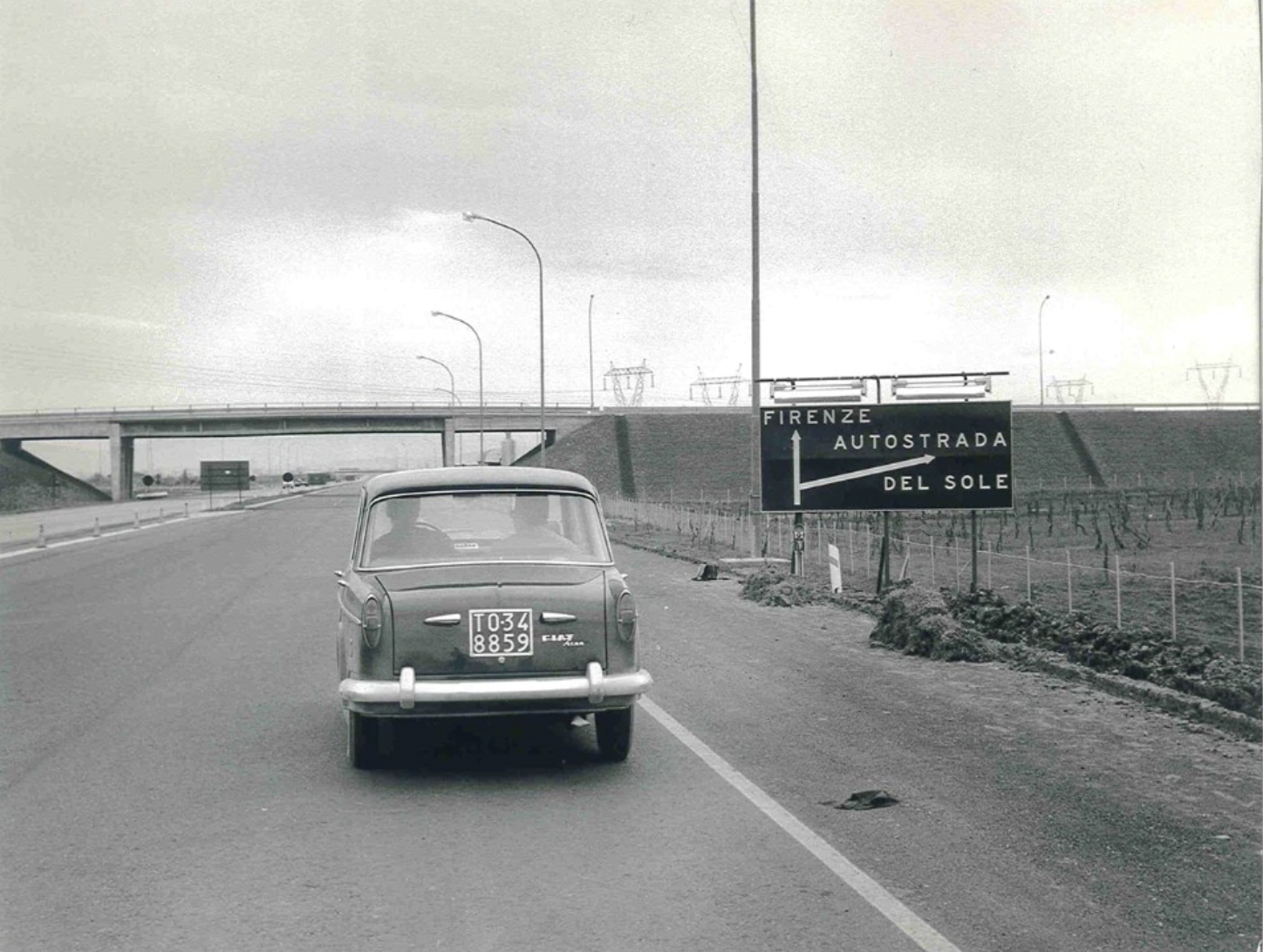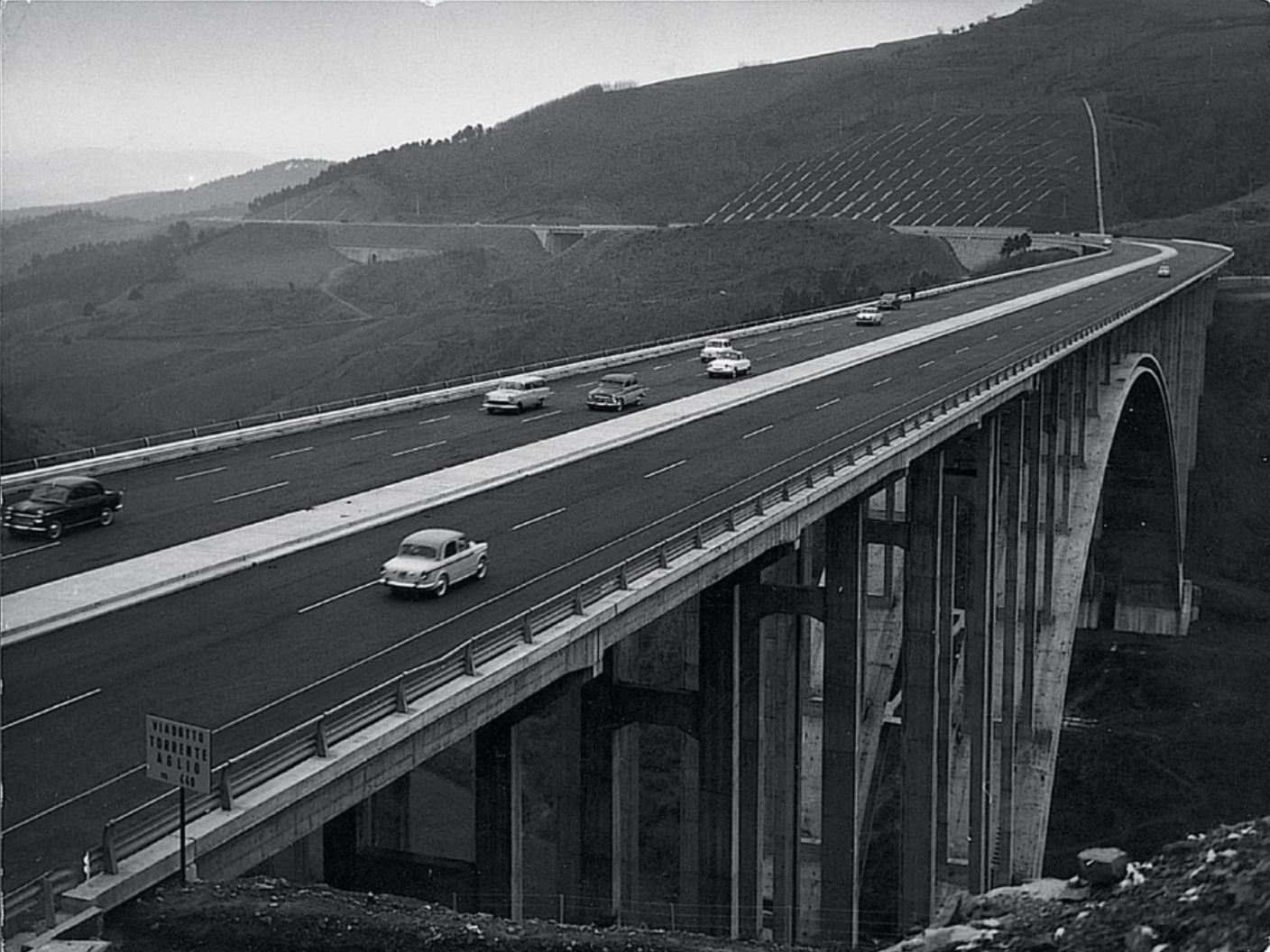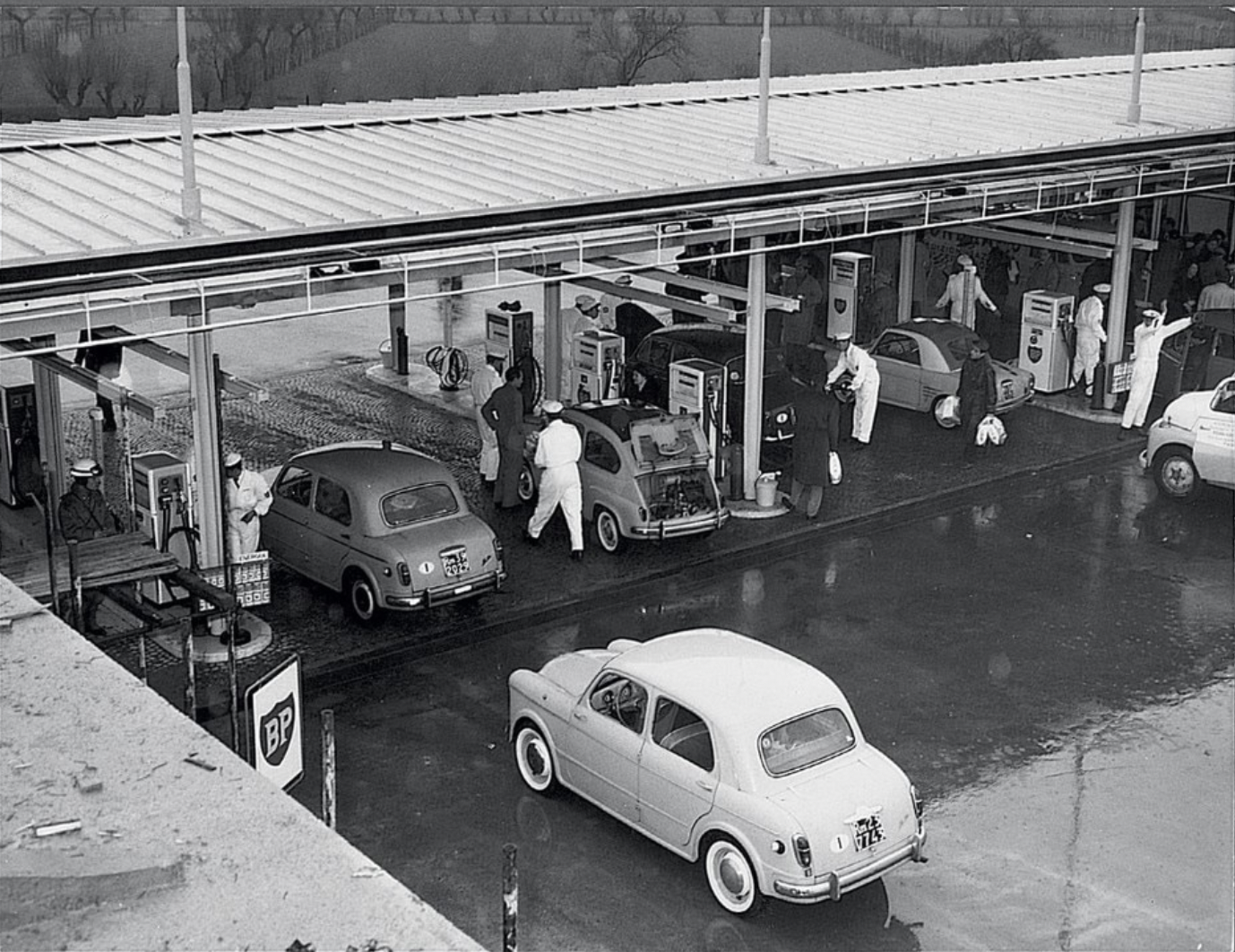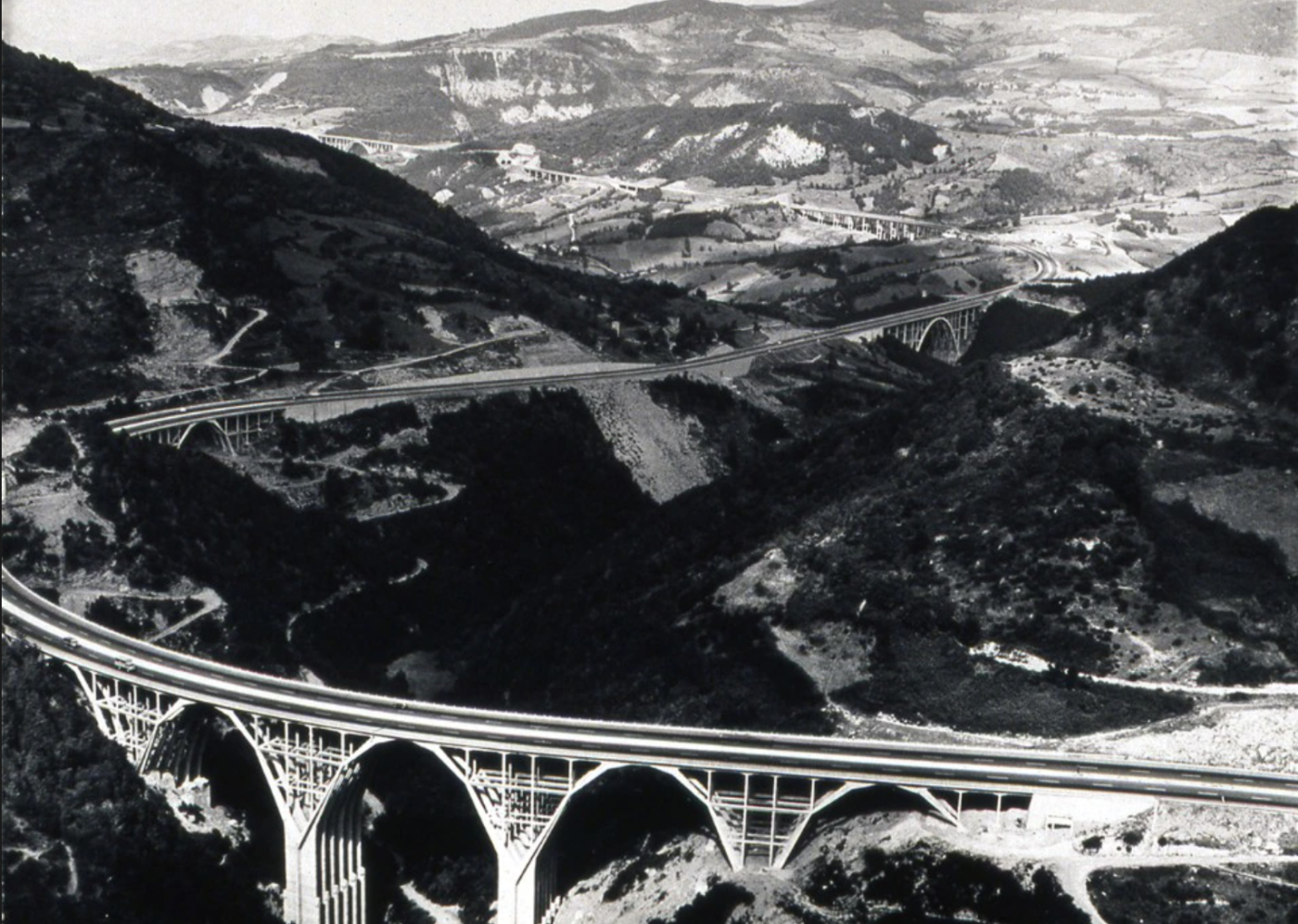It used to take two days of travel on bumpy, dust-caked roads to reach Naples from Milan. On October 4th, 1964, that travel time was slashed to seven hours. After eight years of work, the A1 highway was completed a surprising three months early–a first and last in Italy, it seems–and not without a few casualties, sacrificed between elevated bridges over the Tiber and rivers of bitumen. (Look to your right heading onto the highway from the Firenze Nord tollbooth, and you’ll see Giovanni Michelucci’s funky Chiesa di San Giovanni Battista, a church dedicated to the many lost in the road’s construction.)
The A1, or Autostrada del Sole (Highway of the Sun), was a look to the future, one that promised to jump-start an economic boom and provide access to the sunny south, perfect for the new era of paid holiday vacation. The name was a guarantee of happiness–a highway that, no matter how concrete, invited sunbathing and good sea air, far from the “gray” and “fog” of northern Italian cities. For one traveled along the A1 from Milan, Bologna, Florence, and Rome to the sulfurous lands of Naples, to the active volcanoes of an imperishable summer. The north and the south of Italy were finally shaking hands, thanks to 100 billion liras (more or less 250 million euros today) and 755 kilometers’ worth of paved road.
Piling into automobiles named after multiples of 100–think Cinquecento, Seicento, Millecento–with striped deck chairs strapped to the roofs, Italian families clogged the A1 to reach coveted beaches along the coastline. And Fiat was more than happy to feed the flames, producing one million of the 600 model alone between 1955 and 1960; the advertising campaign focused on the concept, almost revolutionary at the time, that a car could also be intended for leisure and camping. Italians, in the swings of post-WWII consumerism, leaned in, and the automobile soon became a symbol of independence and emancipation as the Vespa had been before. The open road of the A1 was its perfect match.
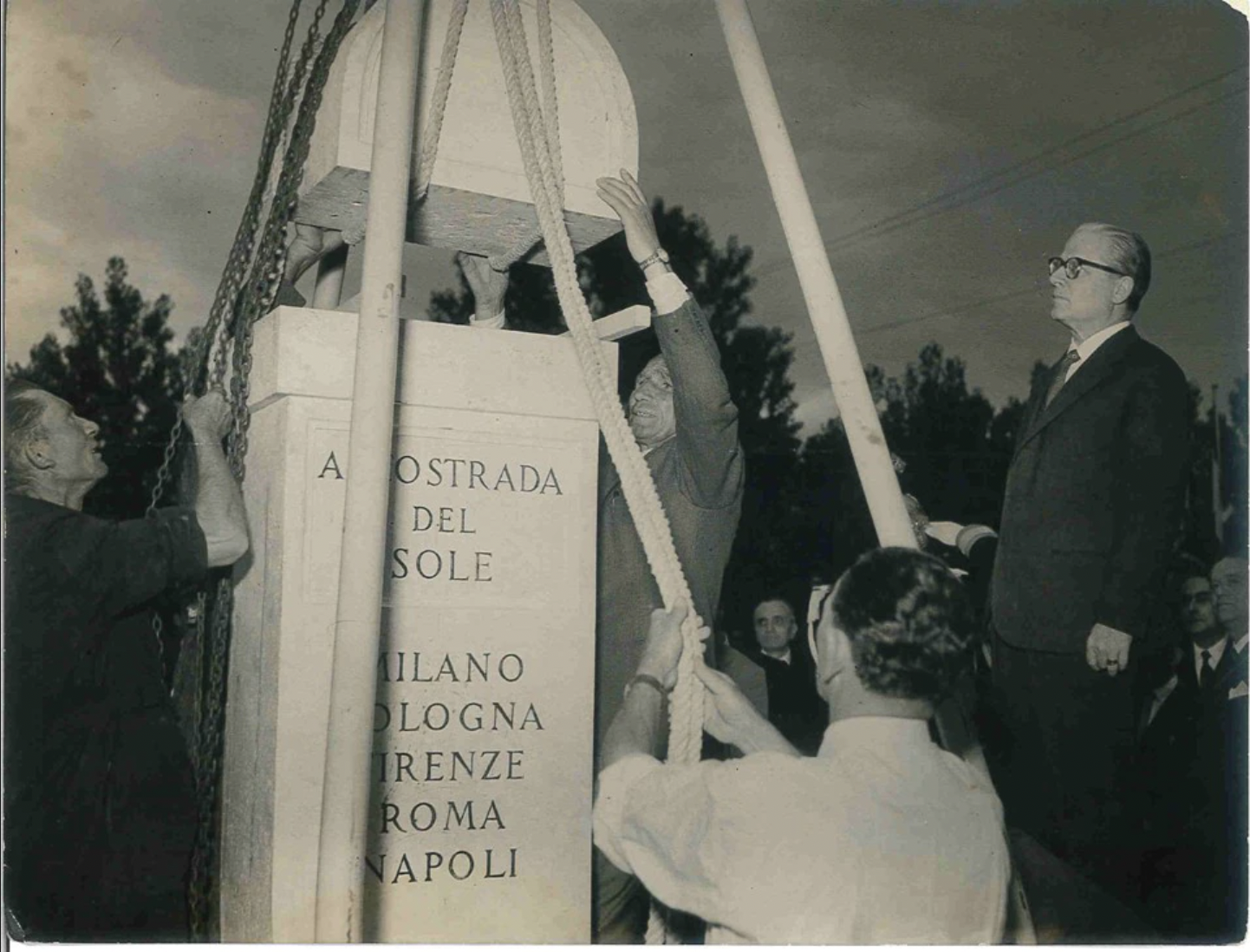

Voyagers on the A1 were sustained by 56 service oases in the asphalt desert, all based on Italy’s first roadside rest area, born on the Milan-Turin highway in 1947 when Mario Pavesi decided to promote his family cookie factory Pavesini right there. It was on the A1 that Europe’s first bridged rest stop, designed by Angelo Bianchetti for Pavesi, opened in 1959 in Fiorenzuola d’Arda–to be merged with the Motta and Alemagna rest stops under the Autogrill brand in 1977.
Back then, Autogrill might just have been as cool as Studio 54. Some Italians went to lunch on Sundays in the truck stops while watching cars whizz by under the large windows like at the Monza racetrack, while others chose the spot for their nuptials.
Autogrill is no longer the destination it once was, nor is the A1 a feat of the future, but it remains the longest highway in Italy and the one that really does act as Italy’s aorta. Sixty years later, summer comes around, and we still pile into cars that are pushing 40°C–the heat and the traffic and the stiff legs to be promptly forgotten when the Highway of the Sun delivers us to sparkling seas.



